Tropical plants add beauty and life to our homes, and they aren’t difficult to care for once you understand what they need.
They make excellent indoor plants because they’re fairly easy to grow and have the same basic requirements.
In this detailed tropical houseplant care guide you’ll learn all you need to know about growing them and keeping them healthy.
I cover everything from watering to humidity, soil, fertilizer, light, and pest control to troubleshooting common problems, and much more.
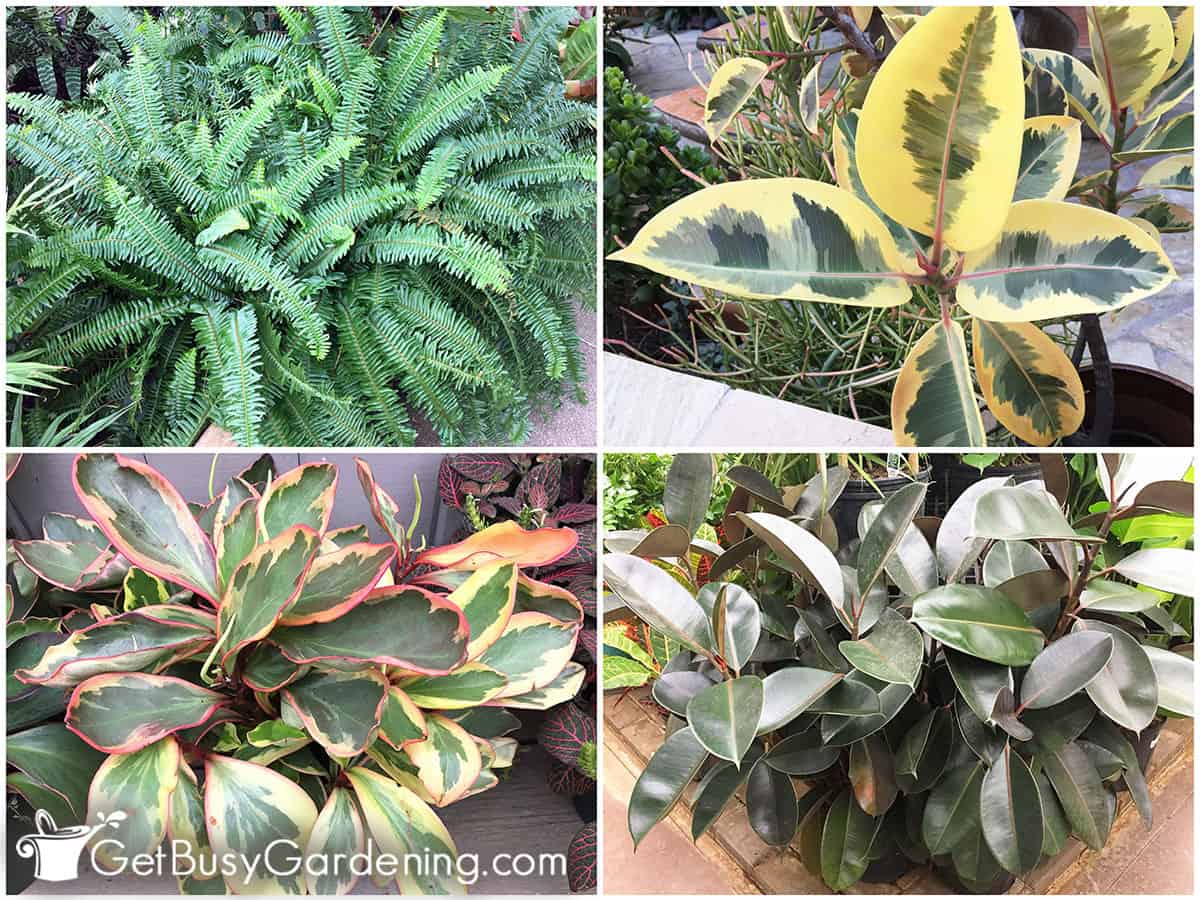
Growing Tropical Plants Indoors
Tropical plants make excellent houseplants because many of them can easily adapt to the average home environment, and they don’t require any special care.
They come from tropical regions around the world where they live under the shade of large trees. That means they don’t need a lot of light, which is perfect since most of us don’t get much sun in our homes anyway.

Different Types Of Tropical Plants
There are thousands of different types of tropical plants, so there’s no way I could name them all here. So I put together a quick list of some of the most common ones, and a few of my personal favorites:
- Palm plants
- Spider plants
- Chinese evergreen
- Dumb cane
- Peperomia
- Alocasia
- Bromeliad
- Dracena
- Money tree plant
- Rubber tree plant
- Peace Lily
- Philodendron
- ZZ plants
- Ferns
- Orchids
- Croton
- Pothos
- Bamboo plants
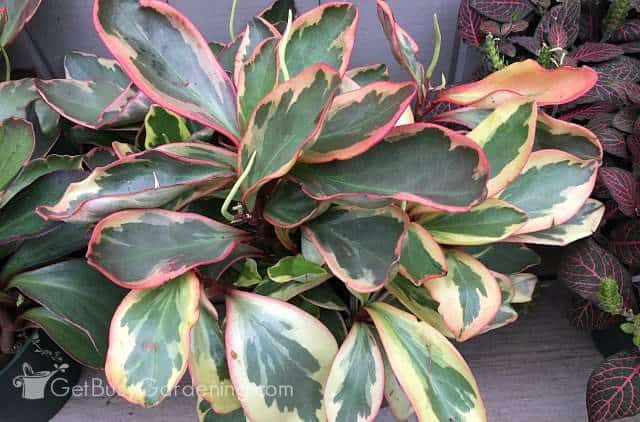
Related Post: 15 Easy Indoor Plants That Anyone Can Grow
Tropical Plant Care Instructions
Most popular tropical plants have similar care requirements. That’s awesome for us, and it makes growing them so much easier. Below you’ll find all the details you need to be successful.
Water
Most tropical plants need consistent and even moisture, and don’t like to be overly wet or bone dry. This can be tricky to get just right.
In general, it’s best to let the soil dry 1-2″ deep before watering again. So be sure to avoid overwatering, but never let it dry out to the point where the plant starts to droop.
If you struggle with this, I highly recommend getting yourself a moisture gauge so you can keep it at the right level.
Related Post: How To Properly Water Your Indoor Plants
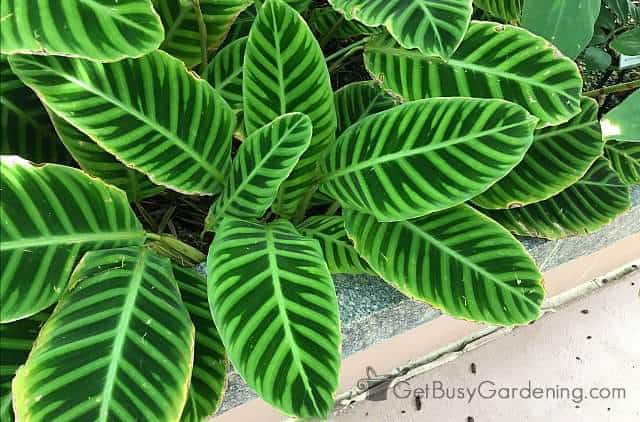
Humidity
Since these plants are from tropical climates, they love humidity, which is usually much lower indoors than it is outside.
The most common sign that the air is too dry is the leaf margins and tips on your plants will start turning brown.
Some are more sensitive to low humidity levels than others, but it never hurts to increase it, especially during the dry winter months.
You can do this by either misting the leaves regularly, running a humidifier nearby, or putting them on top of a pebble tray filled with water (don’t let the pot soak in it though).
Related Post: The Ultimate Indoor Plant Care & Growing Guide
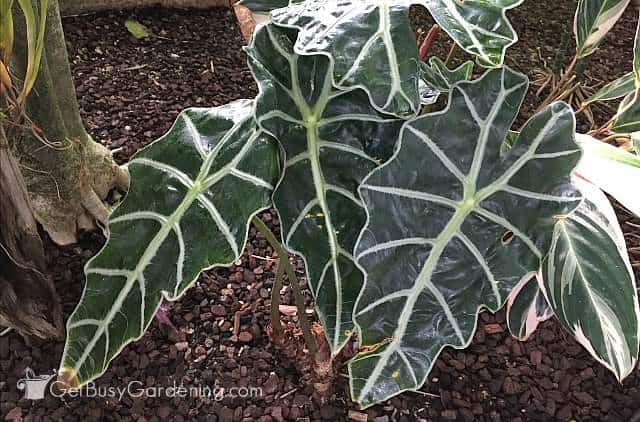
Light
In general, most indoor tropical plants need bright, indirect light to grow their best. But some require more than others.
The signs that your plant isn’t getting enough light are dull leaf colors, long, leggy branches and stems, or the whole thing is reaching for a nearby window. In that case, either move it to a brighter location or add a grow light.
On the other hand, too much sunlight can burn sensitive leaves. If you notice brown, white, or faded spots on the leaves of a plant that’s next to a window, move it to an area that’s protected from the hot, direct sun.
Related Post: Low Light Indoor Plants That Anyone Can Grow
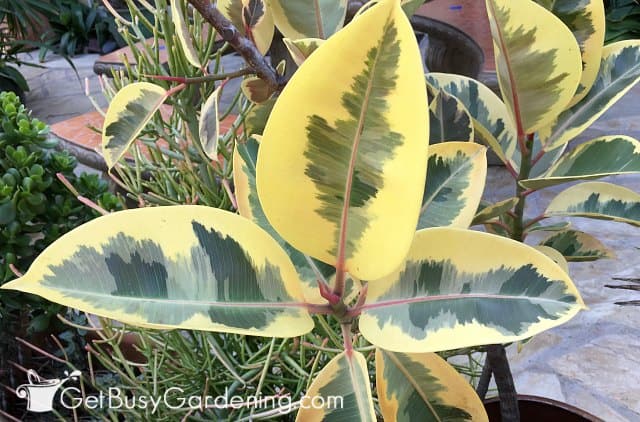
Soil
When it comes to soil, most tropical houseplants aren’t super picky and they will grow just fine in a general purpose potting mix.
If you tend to overwater, then I recommend amending it with 1/4 perlite or pumice to improve the drainage.
Otherwise you can make your own by mixing 2 parts peat moss or coco coir, with 1 part perlite or pumice, and 1/4-1/2 part vermiculite.
Related Post: How To Make Potting Soil For Indoor Plants

Fertilizer
Though they are not typically heavy feeders, it’s always beneficial to feed your tropical plants during the spring and summer as part of your regular care routine. Then stop during the fall and winter to let them rest.
You can either apply fertilizer granules twice during the growing season, or use a general purpose liquid monthly. I recommend using an organic brand because chemicals can easily burn the roots.
Related Post: How & When To Fertilize Houseplants
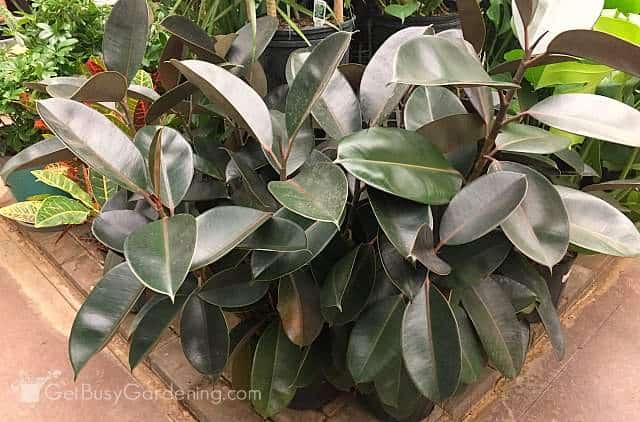
Pest Control Tips
Bugs can become a major problem on tropical plants, both indoors and outside in the garden. If you find any of these common houseplant pests, begin treating them immediately.
Insecticidal soap works great to kill bugs on contact. You can easily mix your own using 1 tsp mild liquid soap per 1 liter of water.
For long-term control, I recommend using organic neem oil, which is a natural pesticide that works very well for getting rid of persistent infestations.
Some tropical plants are sensitive to any type of spray, so always be sure to test it on a few leaves before treating the whole thing.
Related Post: How To Get Rid Of Houseplant Bugs
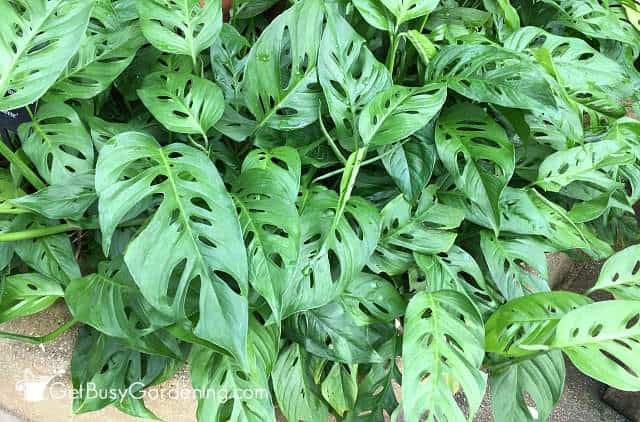
Troubleshooting Common Problems
It’s usually pretty easy to care for tropical plants, but over time you will likely run into some issues. Below are a few of the most common problems you might have, and how to fix them:
Brown Or Yellow Leaves, Tips, Or Margins
Brown or yellow leaves are usually caused by low humidity levels or improper watering. Most tropical plants need to stay evenly moist and like high humidity.
Let the soil dry 1-2″ deep before giving your plant a deep drink, and always allow the excess to drain completely from the pot.
If your home is dry, then try running a humidifier, misting the leaves, or putting the pots on top of a pebble tray filled with water.
Weak, Leggy Growth
Weak or leggy growth is usually a sign that the plant isn’t getting enough light. In general, they do best with bright, indirect light.
If this is happening to yours, move it closer to a sunny window or add a grow light. An east or west facing exposure is usually perfect.
Leaves Drooping
If your tropical plant suddenly starts to droop, wilt, or sag, that usually means it’s either getting too much or not enough water.
Check the moisture level by sticking your finger one inch into the soil. If it feels wet, then allow it to dry out more, otherwise give it a good drink.
If you want to learn all there is to know about maintaining healthy indoor plants, then you need my Houseplant Care eBook. It will show you everything you need to know about how to keep every plant in your home thriving. Download your copy now!
More Houseplant Care Guides
- How To Care For Cactus Plants
- Succulent Plant Care & Growing Guide
- How To Grow Plumeria Plants
- How To Grow & Care For Rabbit’s Foot Fern
- How To Care For Sago Palm Trees (Cycas revoluta)
- How To Care For Umbrella Tree Plant (Schefflera arboricola)
Share your tropical plant care tips in the comments section below.
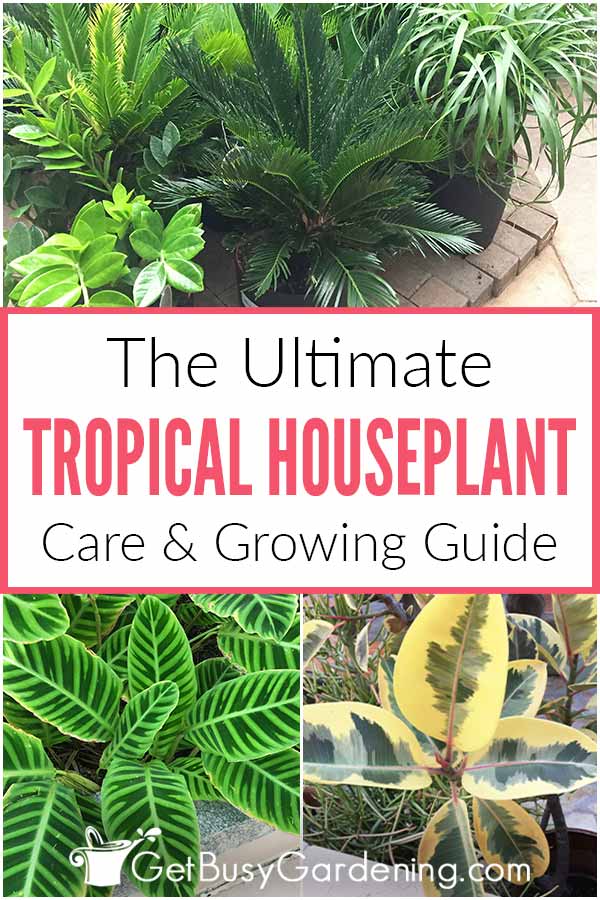
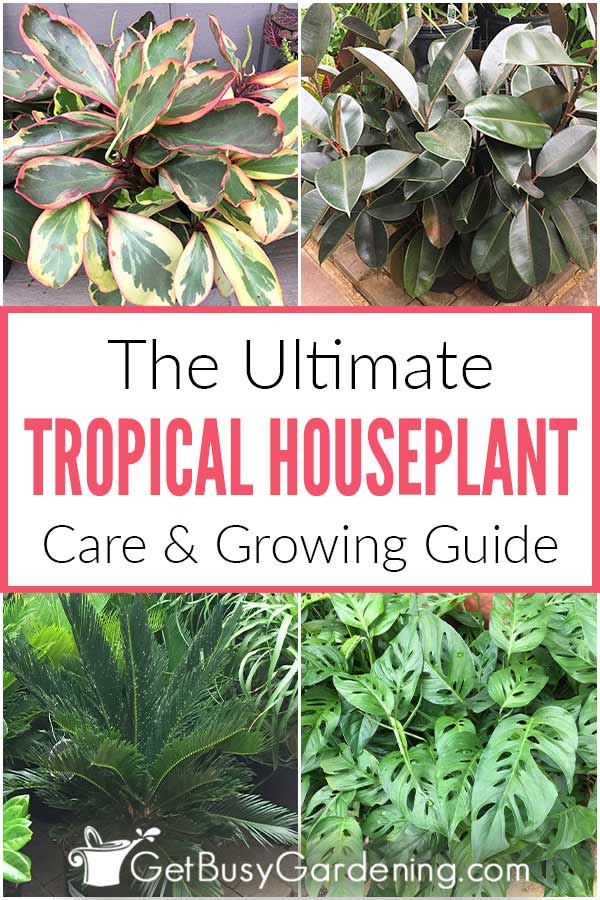
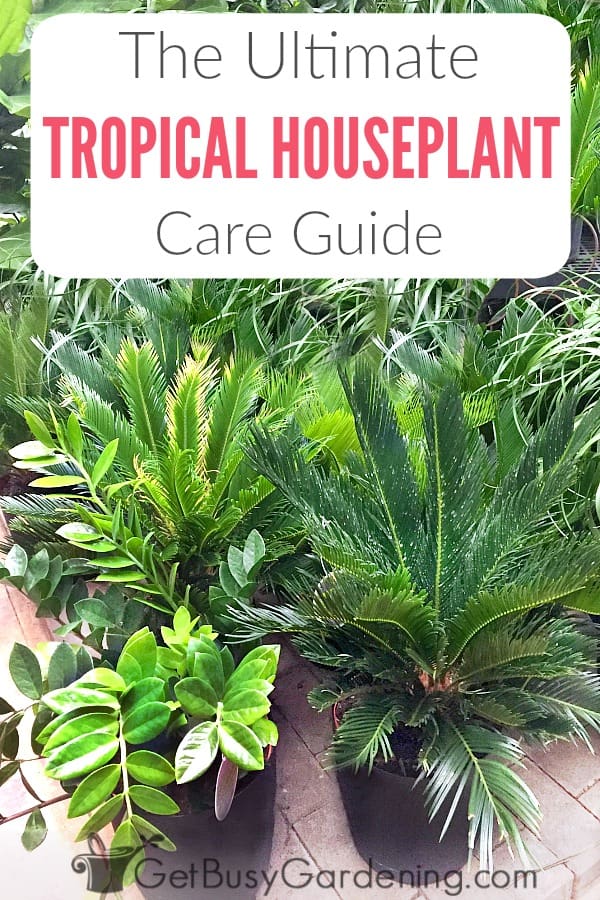



Leave a Reply